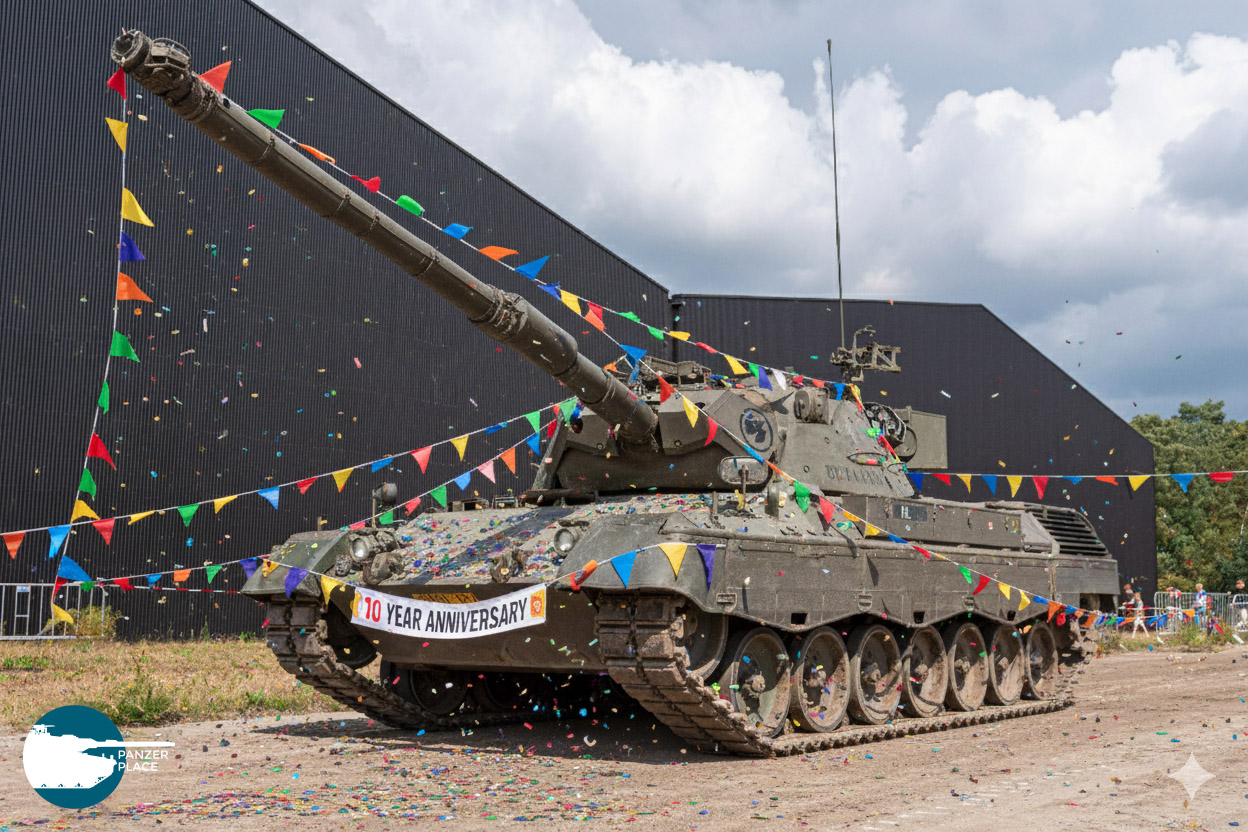The Sturmtiger, although only produced and employed in small numbers, easily rivals the Tiger’s fame. This vehicle was used in three specially created units, Sturmmörser-Kompanien 1000, 1001 and 1002. In their new book “Sturmtiger: The Combat History of Sturmmörser Kompanies 1000-1002” Lee Archer and Timm Haasler aim to tell the story of these units. From the total of 18 Sturmtigers built, eight are treated in more detail.


As an introduction, the book starts with a short overview of the development of the Sturmtiger. This shows that Hitler was the main driving force behind the development of this somewhat strange weapon platform, centered around a Navy rocket launcher. In a table at the end of this section, an attempt is made to clarify when which Sturmtiger went to which unit. This table would have been useful while reading, if it hadn’t been so cluttered. The authors chose to combine admissions and unit inventory, making it somewhat hard to read, and some headings are not particularly helpful: what does “Wp ins of” mean, anyway?

This chapter is followed by the technical specifications, including an explanation of different types of ammunition and the operation of the gun. A series of photographs explains the loading procedure in detail. Next, we arrive at the main subject of the book: the combat history of the Sturmtiger units. The reader is taken through the movements of the various units month by month, starting in August 1944 with the creation of the Sturm-Mörser-Batterie 1000. We learn about the first actions in Warsaw and the move to France. In spite of the author’s efforts, some facts about the ins and outs of the Sturm-Mörser units remain unclear. In several cases, authors point out that source documents contradict each other. This causes gaps from time to time, which the authors try to fill as good and as bad as possible by making assumptions.
The text is complemented by page-size photographs. In general, these are of excellent quality. The photographs document eight identified Sturmtigers, left in the field by their crews. These vehicles, identified by the name of their location, are briefly discussed wherever possible through eyewitness accounts of villagers or the memoirs of crew members. This is where the book really shines. All Sturmtigers can also be admired in colour thanks to the drawings by Felipe Rodna – by the way, the book also contains one colour photograph! The following Sturmtigers are covered in the book: Oberembt, Hützemert, Brumby, Ebendorf, Menden, Rögasen, Frontenhausen and Lichtenantenne.

The photo coverage of these vehicles is uneven, but this should come as no surprise. The Oberemt-Sturmtiger, for example, was photographed in great detail by the Allies and features in 47 of 130 photos, taking up a substantial part of the book. The least photographed Sturmtiger is the one at Lichtentanne: there is only one known photograph so far. At the end of the book we find three American ETO reports on the Oberemt-Sturmtiger as well as the special 38 cm rocket ammunition. Also tables with allocations and the complete authorized combat strength list (KstN) can be found here, which is a nice addition for the Sturmtiger enthusiast.
At the back of the book, we find the endnotes section. This is something I really appreciate, and I think no serious history oriented book can do without. The footnotes throughout the book make it easy to follow what the authors base their claims on. It was an unpleasant surprise to see the work ‘Tiger – die Geschichte einer legendärer Waffe’ by Kleine and Kühn quoted multiple times in the endnotes. Kühn, a pseudonym of Franz Kurowski, has been known to make up and alter history where he saw fit. Although the authors (fortunately) do not blindly copy this source, in my opinion, it would have been better if they had ignored it altogether.

Furthermore, I was puzzled to find that although many sources had an archival reference, some records had to do without. After some searching of my own, going of document names and dates, I was able to find most of these records quite easily in the archives. I’m left wondering why the effort wasn’t made to also include the archival references of these records in the endnotes.
Did Archer and Haasler succeed in creating a comprehensive picture of the Sturmmörser-Kompanien? Perhaps not all-encompassing, but the book gives a good overview of the current state of knowledge on the Sturmtiger units. Furthermore, this is probably the best documentation of the eight known Sturmtiger you will find to date. Unfortunately, the development history has been kind of neglected, offering no new insights, but frankly, that is not the main subject of the book. If you like the Sturmtiger, you should definitely buy this book, even if it were for the plethora of photos alone.
Sturmtiger: The Combat History of Sturmmörser Kompanies 1000-1002 by Lee Archer and Timm Haasler
Publisher: Panzerwrecks Limited
Published: September 2021
ISBN: 978-1908032232
Pages: 176
Format: Hardcover
Price: €44, £35, $49 (US)
Errata
While checking some original documents, I noticed the book contains a few small errors, which I will list here.
Page 8 (Table)
- Fahrgestellnummer 250237 is mentioned too often. The Sturmtiger of Sturm-Mörser Kompanie 1000 in reality is chassis number 250327.
- The production numbers mentioned for August 1944 cannot be correct, because a second Sturmtiger was demonstrated already in April 1944.
Page 40
- The first time chassis 250237 is mentioned, it should be 250327. This means that, at the time, 250327 was at Sturm-Mörser Kompanie 1000 and 250237 at Rheinmetall-Borsig.




Leave a Reply